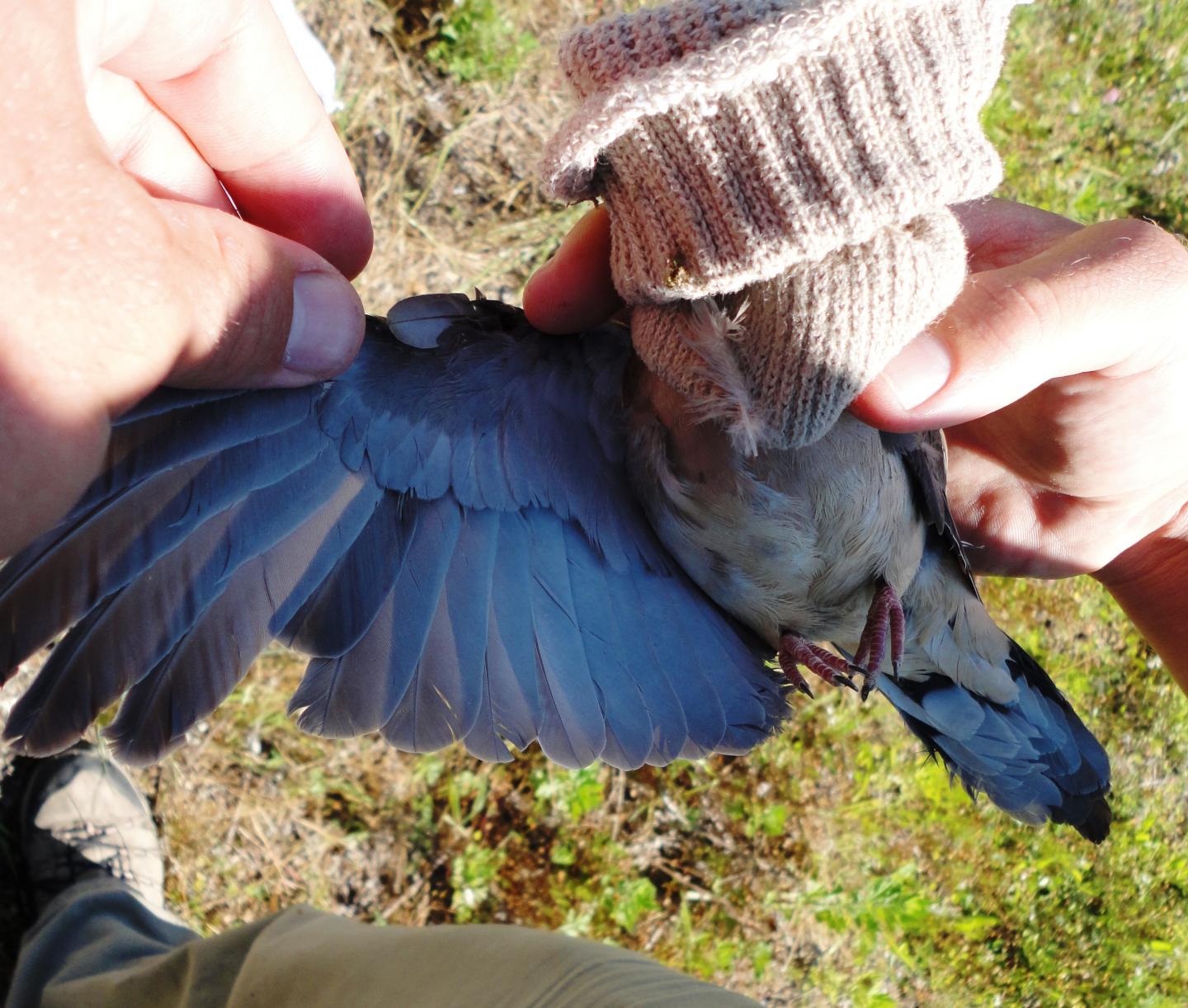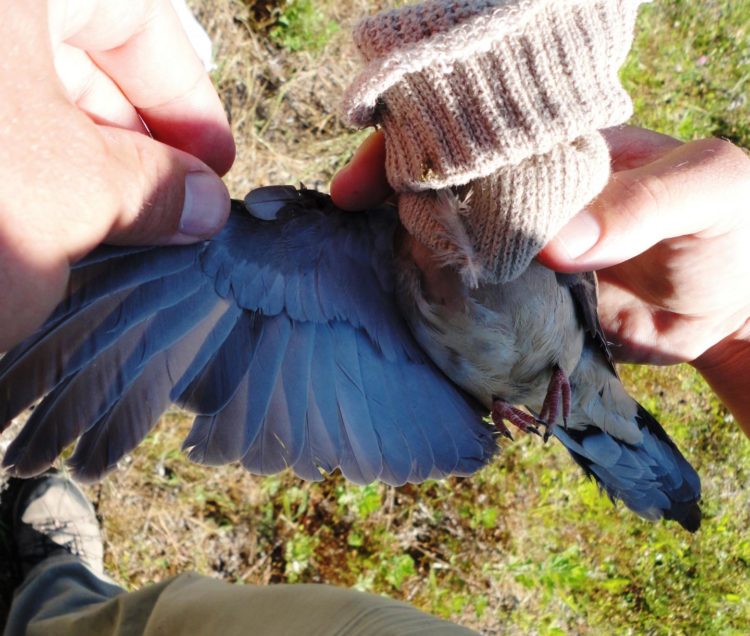
Credit: David Muñoz
Populations of some common bird species, including the familiar Mourning Dove, have been on the decline for decades in North America. Agricultural lands can support bird populations, but agricultural intensification can also cause populations to decline — so what role are changes in American agriculture playing for Mourning Doves? New research published in The Condor: Ornithological Applications shows that relatively small changes in the amount of land used for different types of agriculture may be related to big changes in how many young doves are produced.
Pennsylvania State University’s David Muñoz and David Miller based their study on more than 150,000 Mourning Dove wings submitted to the U.S. Fish and Wildlife Service between 2014 and 2018. A Mourning Dove’s age can be estimated from the molt pattern of the wing feathers, and the age ratios of birds killed by hunters let researchers estimate doves’ reproductive output in different regions. They found that although the specifics varied between locations, small changes in land cover were linked to large differences in reproductive output. In the central U.S., for example, the ratio of juvenile to adult Mourning Doves was 37.5% higher in counties with the highest proportion of small-grain agriculture such as oats, than in counties with no small-grain land cover. In the eastern U.S., nearly the same reproductive gains were seen with even a smaller increase in small-grain agriculture from 0% to 5% across counties. Greater proportions of intensive corn and soybean agriculture, on the other hand, were tied to lower reproductive output in the eastern U.S.
“As the human population keeps growing, it is important we find ways to use our land effectively for human benefit and wildlife. One way to do that is to understand the demographic responses of birds to these changes,” says Muñoz. “Although agricultural production has been tied to bird reductions across the globe, we found that it is important to distinguish between certain types of agriculture, and that the patterns varied regionally across the United States. This means that in one part of the country, a certain type of land cover may be beneficial, but in a different part, it may not be. This makes it challenging to make generalizations between bird demography and response to global land-use change.”
Still, Muñoz is hopeful that approaches like his can lead to meaningful changes in how conservation is practiced in agricultural landscapes. “By characterizing the relationship between land cover and reproduction, we believe that conservation efforts can focus on practices that improve reproductive habitat,” he says. “Effective conservation will need to continue incorporating economic market pressures and policies that affect development and agricultural practices. Without doing so, it may be hard to influence conservation in human-dominated landscapes.”
###
“Human-dominated landcover corresponds to spatial variation in Mourning Dove reproductive output across the United States” will be available March 11, 2020, at https:/
About the journal: The Condor: Ornithological Applications is a peer-reviewed, international journal of ornithology, published by the American Ornithological Society. For the past three years, The Condor has had the number one impact factor among 27 ornithology journals.
Media Contact
Rebecca Heisman
[email protected]





